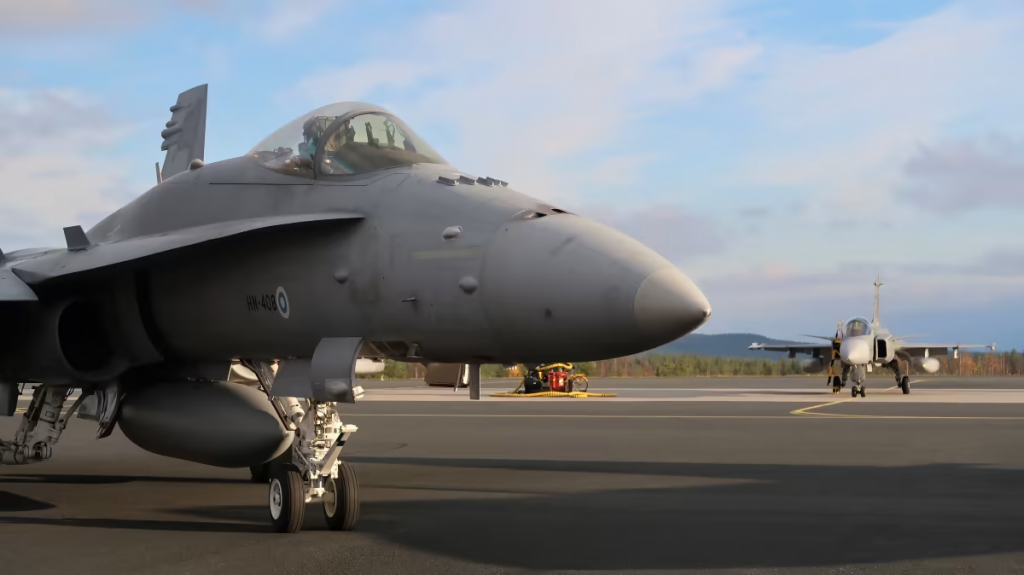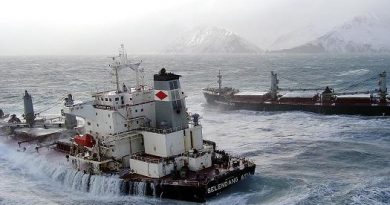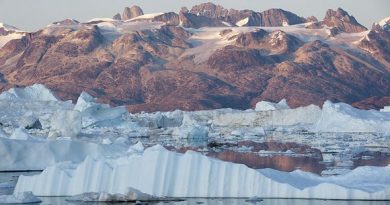Finnish Defence Forces to use biofuels on land, at sea

Solar panels have also been installed on Defence Forces facilities all the way up into Lapland, where one building at the Someroharju garrison has been fitted with the panels.
The Finnish military is targeting a major reduction in its climate emissions by introducing biofuels in land and sea transport. A detailed plan will be completed next year.
“Of course, a lot depends on the availability and price of renewable fuels, but at least now the goal seems very feasible,” said the Finnish Defence Forces’ Environment Manager Teemu Pasanen.
Maize, forest industry waste, and fish oils are examples of raw materials currently used for the production of biofuels, and in the future also algae will likely become increasingly important. Not every battle tank will necessarily be running on biofuel, but a large number of military vehicles will.
Jet fighter fuel from waste and animal fats?
Land and sea transport generate a quarter of the Defence Forces’ emissions, but the biggest source can be found in the sky. When an F-35 fighter (Finland has 64 on order) makes a 200-kilometre run, its emissions are equivalent to driving a petrol-powered car for a year. Sixty-five percent of the Finnish Defence Forces’ emissions come from aviation.

The idea of aviation biofuel for the F-35s, made from for example waste and animal fats, is being investigated with the fighters’ manufacturer Lockheed Martin, but it is not a simple matter.
Pasanen, who has worked with environmental issues in military aviation, does not believe that we will get rid of fossil-based kerosene-type jet fuel this decade.
“I would consider it unlikely. On the other hand, development moves forward quickly, so it remains to be seen,” he noted.
F-35 fighters are also flown by the UK, where the Royal Air Force is investigating the possibilities of algae-based biofuel and synthetic kerosene. In Sweden, a Gripen fighter made a successful test flight with rapeseed oil-based fuel several years ago. However, biofuels have not yet been certified for regular use by military aircraft.
Greening Nato
Armed forces and the defence industry are estimated to generate about six percent of the world’s carbon dioxide and methane emissions. The actual share is unknown, because the industry is not obliged to report its emissions, although, some arms manufacturers do.
Armed forces have been left out of international climate agreements such as the Kyoto Protocol and the Paris Agreement, with national security cited as a reason, and Finland’s emission reduction targets are not binding on the Defence Forces either.
However, there are voluntary efforts in many countries. Nato established a climate change competence centre in Canada this year. Secretary General Jens Stoltenberg has said he has a vision of Nato being carbon-neutral by 2050.
Finland will have no difficulty meeting Nato’s climate goals, according to Ministry of Defence environmental adviser Sara Kajander.
“I would say that Finland is really in the vanguard in this matter. Our national policies are similar or more ambitious compared to what Nato has published so far,” she said.
According to Kajander, only a few countries, including Finland, have set a public goal for military operational emission cuts.
Security of supply
Switching to low-emission fuels is not just a sensible, environmentally-friendly act, but ultimately a must, because at some point fossil fuels will no longer be available. The changeover will also improve national security of supply, if fuel is obtained domestically and the supply chain is short.
Kajander said that the procurement of biofuels has not yet been agreed upon, and a demand for domestically-produced fuels cannot be directly issued as a criterion in public procurement.
“We are aiming for a practice similar to the current one, where there is a framework agreement with the supplier and certain maintenance requirements are included in that agreement. A domestic supplier is a good guarantee for security of supply for us,” Kajander pointed out.
In Finland, transport biofuels are produced by Neste, ST1 and UPM, for example. Worldwide, nowhere near enough biofuel is yet produced to replace the demand for fossil fuels.
Extreme weather, greater risk of conflict
Both Kajander and Pasanen stress that defence capability will not be compromised by emission targets. If greenhouse gas emission cuts threaten defence capabilities, it will be the emission cuts that will suffer. For example, the Air Force will continue with exercises as much as is deemed necessary.
On the other hand, the climate emissions of barracks and other military facilities have been reduced by as much as 90 percent over the past 10 years. Oil heating boilers have been converted to burn wood pellets and power contracts revised to purchase emission-free electricity.
Solar panels have also been installed on Defence Forces facilities all the way up into Lapland, where one building at the Someroharju garrison has been fitted with the panels.
So far, the panels have produced electricity for one building, explained Markus Hakso, who heads up the Defence Forces’ property management.
“We have now gained experience that they actually work even at these latitudes, so we plan to expand to larger power units,” said Hakso.
Kajander describes the situation as “efficiently picking the low-hanging fruit”. On the operational side, it is more difficult to cut emissions.
The world’s armed forces have every reason to do what they can, as extreme weather phenomena also increase the risk of conflicts in many ways. Floods destroy homes and crops during droughts, many have to flee. The competition for dwindling natural resources is accelerating.
Extreme weather also impacts operations by defence forces when heat waves not only overheat soldiers, but also the electronics they may rely on, and floods destroy important transport routes.
Related stories from around the North:
Canada: Canada’s inaction on Arctic surveillance could affect future sovereignty: report, Eye on the Arctic
Faroe Islands: Denmark, Faroe Islands agree to establish air surveillance radar to bolster gaps in Arctic surveillance, Eye on the Arctic
Finland: Norwegian military vehicles take new transit corridor via Finnish Lapland, The Independent Barents Observer
Iceland: Arctic security discussed at Reykjavik Northern Group meeting, Eye on the Arctic
Norway: Defence minister says Norway must get stronger in the North, The Independent Barents Observer
Russia: Assertive Moscow outlines push into central Arctic Ocean, The Independent Barents Observer
United States: U.S. Army poised to revamp Alaska forces to prep for Arctic fight, The Associated Press



